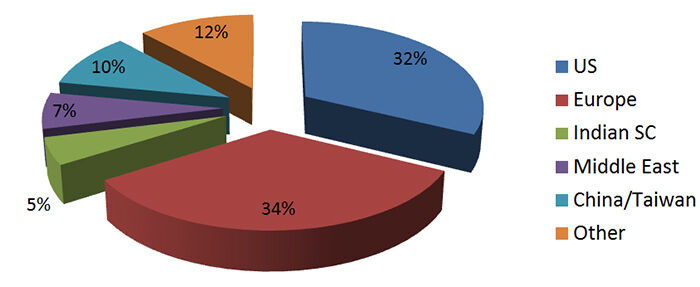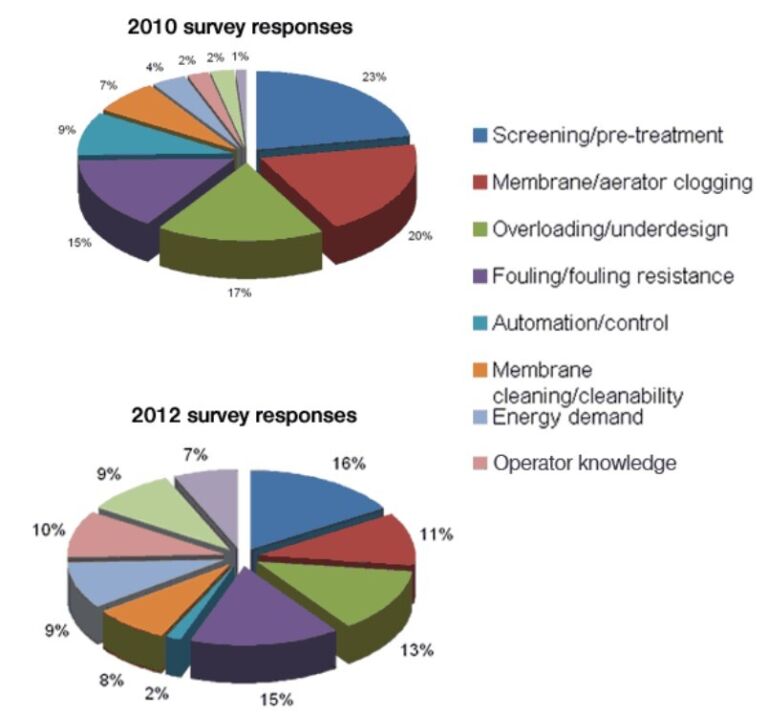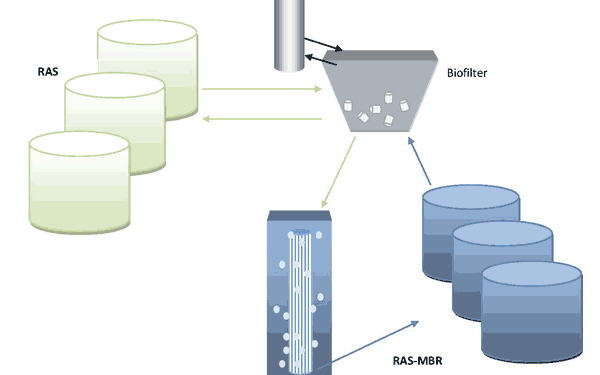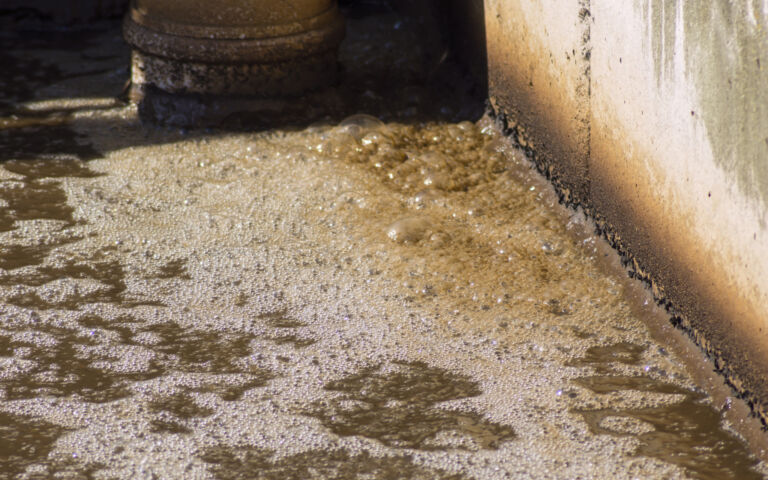The 2012 MBR Survey – the results

Claire Judd and Simon Judd
Claire Judd, Manager of The MBR Site and Simon Judd of Judd Water and Wastewater Consultants carried out a totally unscientific survey of MBR users
1. Introduction
About two years ago, we asked for the views of a range of MBR stakeholders regarding the perceived technical challenges facing MBRs. The survey was a simple open question: What is the main technical problem that prevents MBRs working as they should? We received 48 responses, mainly from practitioners working in the municipal sector.
About a month ago, we asked the same question of both the respondents to the original survey, the members of The MBR Group on LinkedIn and visitors to The MBR Site. The results of the survey are shown below, with data from the 2010 survey shown for comparison.
2. Our survey − answering the question
In total, we received 59 responses to the survey, 70% coming from Europe and the US (compared with 85% for the previous survey). Most respondents belonged to the category ‘membrane product and technology suppliers’ (as with the previous survey).

The top four technical challenges facing MBRs were idenitifed by our respondents as being:
- pretreatment
- clogging
- overloading/under-design, and
- fouling.
Interestingly, this was a similar set of challenges as emerged from our survey two years ago. However, the balance between these four categories has since shifted slightly towards ‘fouling’ (which all but one of the five academic respondents identified as being important).
As a proportion of all identified challenges, ‘fouling’ received 15% of nominations, exactly the same as for the previous survey. ‘Fouling’ was identified as being more of an issue for those dealing with industrial rather than municipal effluents, where ‘screening’ was viewed as the dominant issue. Given that approximately 33% of respondents were associated with industrial effluent – more than double the proportion from the 2010 survey − it is perhaps unsurprising that ‘fouling’ was considered more important than ‘clogging’ overall.

Some of the issues possibly considered minor in the previous survey appear more dominant in the 2012 survey. ‘Energy demand’, ‘operator knowledge’, ‘sludge quality’ and ‘uneven aeration’ between them only attracted 10% of nominations in the 2010 survey, compared with 35% in the latest survey. This can almost certainly be attributed to the nature of the 2012 survey − our 2010 survey was completely open-ended, whereas the 2012 survey suggested 10 categories of issues for respondents to choose from.
3. Inter-related factors and other issues
It was pointed out by a number of respondents that many of the issues are inter-related. For example, ‘uneven aeration’ can often be attributed to clogged aerators. ‘Clogging’ and/or ‘fouling’ results from both poor sludge quality and overloading and often influences the efficiency of both physical (relaxation and/or backflushing) and chemical cleaning of the membranes.
There were also a number of other issues identified as being important by more than one respondent, most significantly:
- membrane integrity
- hydraulic and organic (and thus F:M ratio) fluctuations
- out of spec feedwater.
The membrane integrity issue is surprising, given the apparent robustness of the most established products. Once again, though, the latter two issues relate mainly to overambitious design. Any wastewater treatment process needs to be conservatively designed and based on the ‘worst case’ conditions of high hydraulic and/or organic loading.
For municipal wastewaters with no separate stormwater management, flows increase during periods of heavy rainfall. It is typical to design plants based on some factor of the average flow during periods of no rainfall (‘dry weather’ flows). However, if rainfall is particularly excessive and prolonged, this increases the hydraulic loading but also dilutes the feed. Thus, both hydraulic and organic loading are affected, increasing the flux and often the fouling propensity of the sludge as well.
In the case of industrial wastewaters, where wastewater quality tends to be more variable and subject to industrial process operations, the specification of the feedwater is not always determined with the required precision. As a result, the MBR process may subsequently be insufficiently conservative and therefore become overloaded or underdesigned, a factor identified by 13% of the respondents.
Some respondents specifically identified flow balancing as an issue, a process which reduces flow fluctuations but is often considered too expensive to be included in treatment schemes even if whole-life costs may indicate otherwise.
Lastly, there was more than one less than charitable comment about the process operators. However, this was balanced by one comment identifying that operator error may well be down to time pressures exerted on operators.
These causal relationships are perhaps the most revealing and informative outcomes of the survey. We may be witnessing an increased appreciation of the causes of the most visible and tangible signs of process upset: fouling and clogging, or a reduction in permeability generally. This can be deduced by the fact that some of the issues less well represented in the 2010 survey now make up more than a third of responses in the new survey.
Poor aeration distribution (named in 7% of responses) and poor sludge quality (9%) almost inevitably cause clogging (11%). The sum total of these three categories (27%) is actually higher than that from the same categories in the 2010 survey (23%). Adding the response for ‘screening’ to these figures produces pretty much the same overall total (43−45%) for both surveys.
4. Our conclusions
So, to answer our question − what is the main technical problem that prevents MBRs working as they should? As is so often the case, the answer seems to be ‘it depends’. Operationally, fouling and clogging continue to pose challenges. Energy demand remains a significant deterrent to the more widespread adoption of the technology, and sludge quality is arguably at the root of all of these things.
Clearly there are challenges still to overcome, and it is essentially down to the practitioners − and perhaps the key decision makers − to ensure that MBR process solutions are appropriately designed and operated with due consideration given to the ten identified factors. If this can be achieved, the rewards remain as significant as ever.
MBR technology remains the only wastewater treatment process which can reliably and consistently produce water of high quality − substantially clarified, disinfected and almost fully nitrified. Clearly there are issues still to address, and it is the responsibility of those in the MBR field to ensure that the process continues to be viewed as the technology of choice by encouraging and designing responsible MBR solutions which balance all our ten factors in equilibrium. If this can be achieved, the rewards remain as significant as ever.









